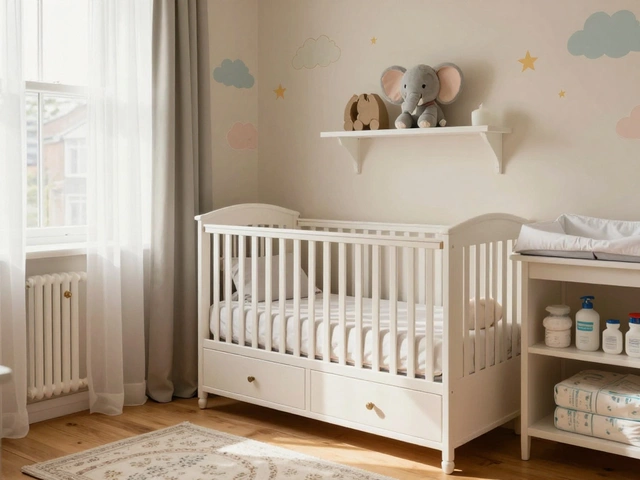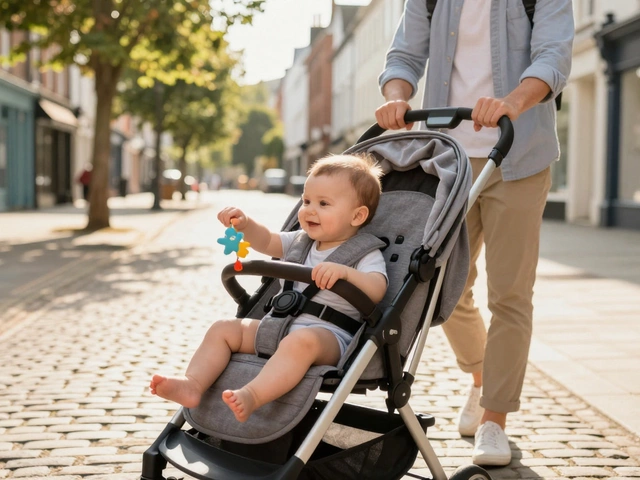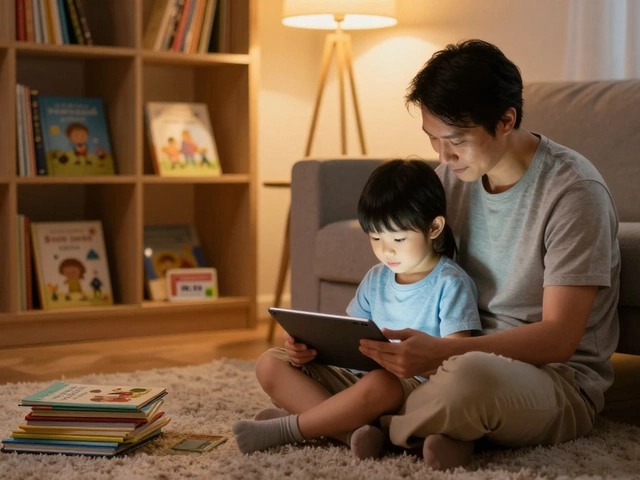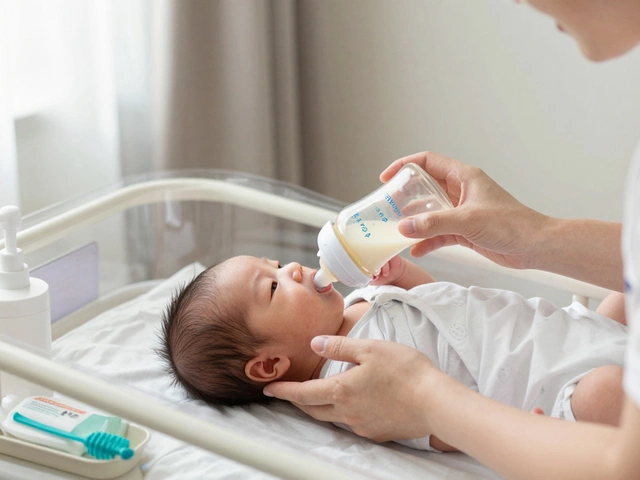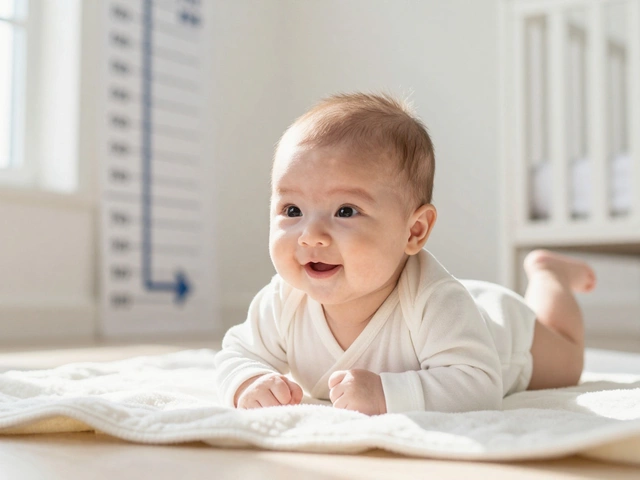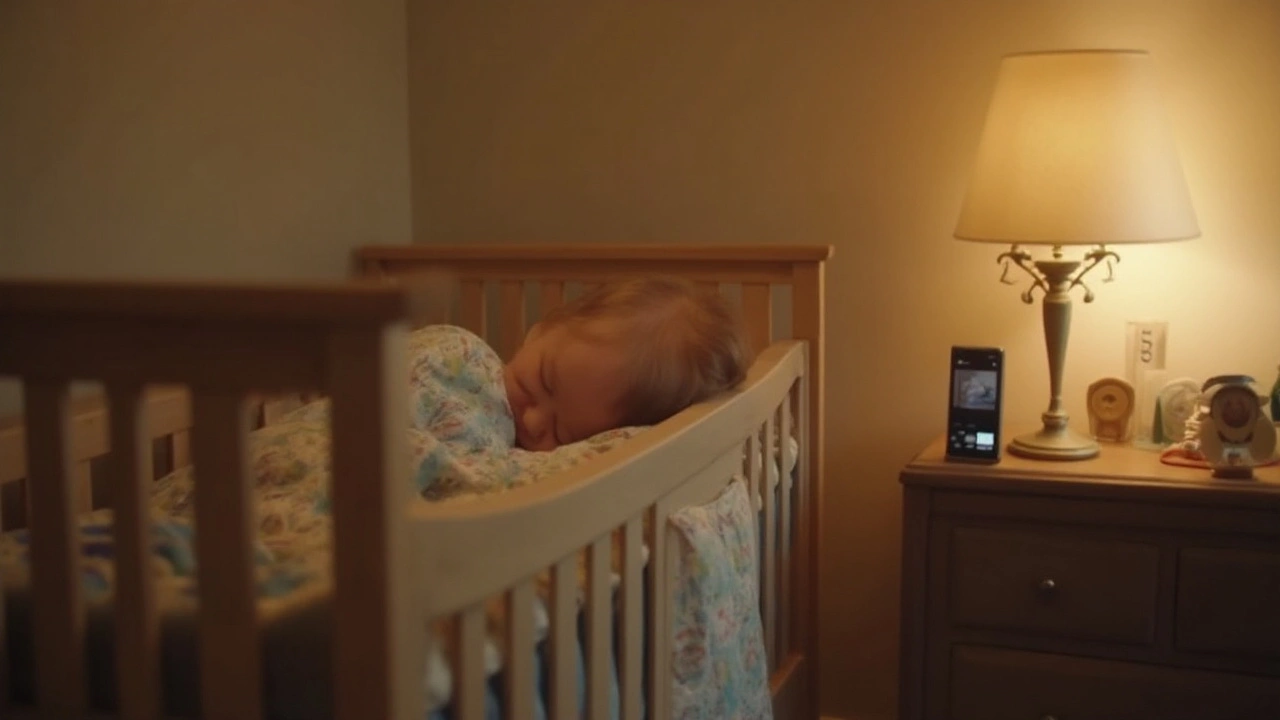
In this digital age, where technology seems to find creative solutions for almost every household need, why should baby monitoring be any different? Perhaps you find yourself with an extra smartphone lying around, or you're simply intrigued by the idea of harnessing the power of technology to keep an eye on your bundle of joy. Fear not, today you're going to learn how easy it is to turn two smartphones into a baby monitor.
This isn't just about convenience; it's about creating peace of mind. While traditional baby monitors can be pricy and sometimes bulky, using smartphones can be a genial and affordable alternative. So, how exactly does one go about this? We'll guide you through the essential steps, from choosing the right apps to setting up a reliable connection between two devices.
As parents or caregivers, your priority is to make sure your baby is safe, secure, and soundly sleeping. Technology can partner with you in this mission, and here, we'll unravel the whole process of setting up a smart, tech-based baby monitoring solution that fits right in with your tech-savvy lifestyle.
- The Concept of Smartphone Baby Monitors
- Setting Up Your Smartphone Baby Monitor
- Recommended Apps for Monitoring
- Benefits of Using Smartphones as Baby Monitors
- Challenges and Considerations
- Tips for Ensuring Reliability and Safety
The Concept of Smartphone Baby Monitors
In an age where smartphones have become extensions of our very selves, it's only natural that they find their place in the nursery as well. The idea of using smartphones as baby monitors stems from their innate ability to connect, capture, and transmit real-time data. These devices, packed with advanced cameras, microphones, and high-speed connectivity, can transform into vigilant sentinels overseeing a baby’s crib with minimal fuss. The concept is simple yet ingenious—replacing the traditional, and often costly, baby monitoring systems with smartphones you already own.
Imagine being able to monitor your baby from the comfort of your living room, or even when you're across town, using the same device that alerts you to messages, appointments, and social media updates. The versatility of smartphones enables not just audio monitoring, but video as well, providing a window into your child's world at any given moment. With the help of specialized applications, setting up becomes an intuitive process anyone who has ever downloaded an app can manage. A smartphone baby monitor may seem novel, but leaning into the technology already at our disposal can be both resourceful and trendy.
Research and user experiences suggest noteworthy benefits and innovations when using smartphones for monitoring purposes. Smartphones, due to their portability, can be adjusted to various angles and locations around the crib, providing a better view than static monitors. Moreover, since you are likely already inseparable from your phone, the convenience score goes through the roof as notifications come directly to the palm of your hand.
"Smartphones have profoundly impacted how we engage with the world around us, and parenting is no exception," explains Dr. Julian Farrow from the Institute of Digital Technologies. "These devices offer real-time connectivity that prior generations could only dream of, making family life both simpler and more interconnected."
But of course, innovation often comes aligned with skepticism. There are privacy and security concerns, as with any connected device. However, with careful selection of apps and diligent privacy practices, these concerns can be addressed. Tech-savvy parents are capable of configuring their devices in a way that the connection is secure and the monitoring remains within the family circle.
The appeal of using smartphones as baby monitors also lies in the cost efficiency. Baby essentials are never-ending, and finding a way to use existing resources wisely can lead to significant savings. The flexible nature of such a setup allows for adjustments over time, adapting as needs change, whether that's monitoring from another room, another floor, or halfway around the world. In essence, the adaptability of smartphones provides a modern, agile solution to an age-old parenting challenge, demonstrating that with technological evolution, comes fresh and exciting possibilities.
Setting Up Your Smartphone Baby Monitor
Embarking on the journey to set up a baby monitor using two smartphones can be an exciting and practical endeavor. Understanding the essential building blocks is the first step toward creating a seamless monitoring system. Essential requirements include two phones and a reliable internet connection. One smartphone will serve as the camera placed near the crib or playing area, while the other acts as the receiver that stays with the parent or caregiver. To facilitate this setup, choose a space near the baby’s sleeping nook that offers a good view while also preventing any potential safety hazards.
The next step involves downloading and installing a baby monitor app. Some renowned apps that cater well to baby monitoring tasks include 'Baby Monitor 3G,' 'Dormi,' and 'Cloud Baby Monitor.' These apps support both Android and iOS platforms and some offer free trials or limited usage at no cost. Many of these apps come loaded with features aimed at enhancing security and convenience. Some can send alerts when your baby wakes up or move; others allow you to soothe your baby by talking through the receiver phone’s speaker. The strength of your internet connection, preferably Wi-Fi, plays a crucial role in ensuring a continuous and smooth feed, minimizing the risk of interruptions while you monitor your child.
Choosing and Configuring the Right App
Each app comes with its own set of advantages and configurational perks. 'Baby Monitor 3G,' for instance, provides a high-video quality stream and even offers white noise options to help lull your little one to sleep, while 'Dormi' allows you to connect multiple parent devices. Begin by installing the chosen app on both smartphones. Spare some time to familiarize yourself with the app's user interface and settings. Launch the app on both devices and select the appropriate mode – one as the baby station and the other as the guardian station. Establish a connection between the devices, which often involves entering an access code or scanning a QR code. The app will initiate the camera on the baby monitor phone while offering a live feed on the parent phone's screen.
"With the evolution of smartphones and innovative applications, parents have affordable alternatives for monitoring their sleeping babies,” remarks Lucy McAllister, a tech expert in parenting solutions.
Additional Equipment and Safety Measures
Though smartphones alone can handle the job well, some additional equipment and settings can significantly enhance the experience. Investing in a simple tripod or a specialized holder can help position the camera phone sturdily, ensuring stability. Setting up your monitor app to send alerts can also give you peace of mind. For extra safety, consider muting the notification sounds on the baby phone to avoid disturbances. Configuring the app to automatically adjust based on your phone’s battery level, screen lock settings, or even night mode enhancements can be very beneficial in maintaining uninterrupted service. All these little considerations combine to transform two everyday smartphones into a reliable baby monitor system, perfect for modern parenting needs.
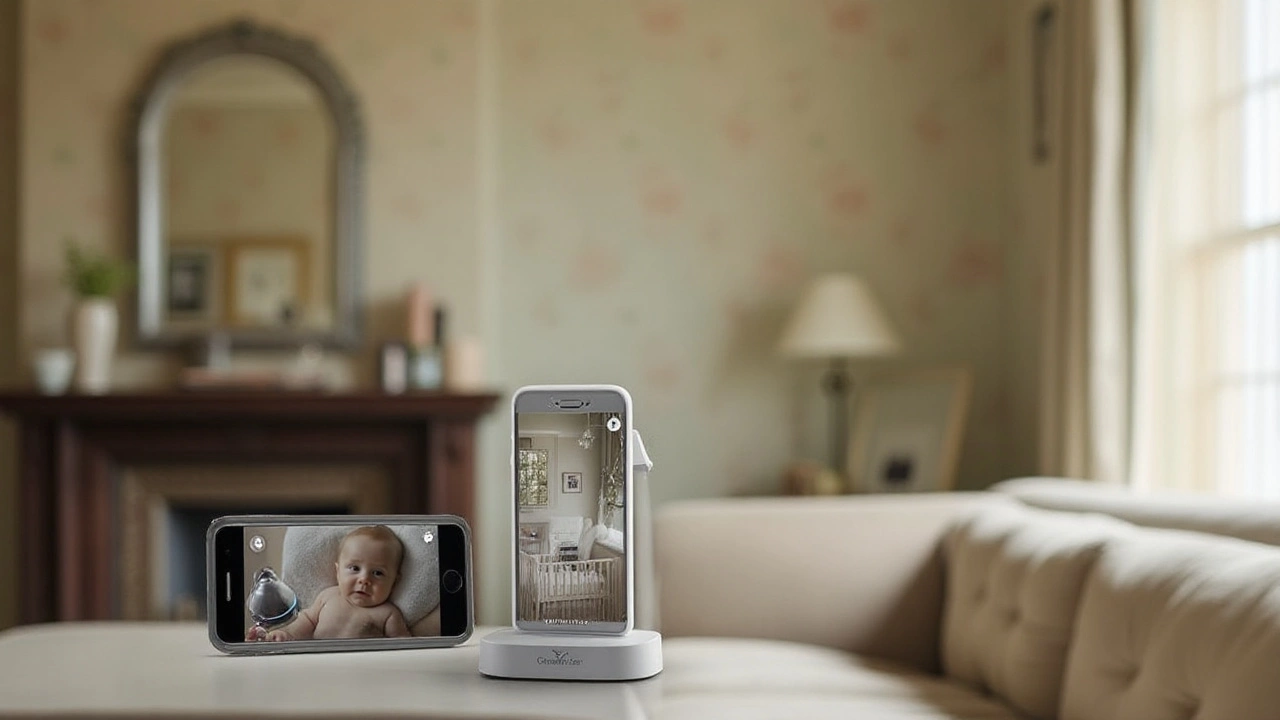
Recommended Apps for Monitoring
Embarking on the journey of turning two smartphones into a reliable baby monitor is simpler than it may sound, largely due to the plethora of smart apps available at our fingertips. These apps transform your devices into fully functioning baby monitors, ensuring you can keep a watchful eye on your little one from anywhere in your home. Understanding which apps stand out not only ensures seamless performance but also makes your task easier as a parent. In this section, we'll delve into some of the leading apps that boast user-friendly interfaces, robust functionalities, and consistent reliability.
One of the most popular choices among parents is the 'Dormi' app, known for its intuitive design and ease of use. Dormi stands out as it transforms your phone into a complete baby monitor with advanced audio and video features. It provides a seamless connection between the child's room and wherever you are within your house, ensuring constant awareness of your baby's needs. The app facilitates automatic adjustments based on ambient noise levels, meaning it gets quieter when your surroundings are loud and stays alert when it's silent. Such features make this app a real asset for parents looking for practical solutions.
Cloud Baby Monitor
Another notable app is the 'Cloud Baby Monitor,' which is appreciated for its high-definition live video and unlimited range capabilities. It connects two devices effortlessly—the parent's phone and the baby monitor phone—via the internet for long-distance monitoring. This app provides peace of mind, allowing parents to step out into the garden or even take a quick coffee run while still keeping in touch with their baby's environment. As a leading-edge tool in the realm of parenting technology, the app supports live video streams and features night vision capabilities, ensuring visibility regardless of the time of day.
'When I discovered the Cloud Baby Monitor, I was pleasantly surprised by how it maintained high video quality while I was in the basement and the baby was upstairs—all without any hiccups,' shared a parent in a review on a popular parenting forum.
To make the most of these apps, it’s crucial to ensure both mobile devices are equipped with full batteries and a stable internet connection. It's impressive to note how some parents have found lasting solutions using technology they already own.
Baby Monitor 3G
The 'Baby Monitor 3G' app is another strong contender, perfect for parents seeking a reliable tech solution. Not only does it support both audio and video, but it also provides a clear connection even over 3G networks, a feature that many parents find invaluable. This app offers two-way interaction so you can soothe your baby with your voice without physically being in the room. Imagine being able to sing a lullaby to your little one all from the comfort of your couch—modern solutions for the modern family.
You might also consider using the 'Skype' app in combination with another device. Though not specifically designed as a baby monitor, Skype offers an audio and video interface that can be used to simply and effectively connect one phone to another. This is a value-laden alternative if downloading new apps isn't appealing or if you're working with a tight data plan. Ultimately, while there are many apps out there, finding one that aligns with your personal needs and preferences will make the experience much more rewarding.
| App | Features | Cost |
|---|---|---|
| Dormi | Audio and Video Monitoring, Noise Level Adjustment | Free with In-App Purchases |
| Cloud Baby Monitor | Live HD Video, Night Vision | Paid |
| Baby Monitor 3G | Two-way Communication, Works on 3G | Paid |
| Skype | Audio and Video Interface | Free |
Benefits of Using Smartphones as Baby Monitors
In today's tech-savvy world, parents are constantly on the lookout for ways to make their lives more convenient and cost-effective. Using smartphones as a baby monitor is a brilliant solution that ticks both these boxes. One of the greatest benefits is the low cost involved. Rather than investing in an expensive baby monitor, you can recycle old phones that may be gathering dust in a drawer. It's a smart way to save money and also be environmentally friendly by reducing electronic waste.
The ease of setup is another significant advantage that makes smartphones appealing for this purpose. Unlike traditional baby monitors, which might require a labyrinth of wires and components, setting up phones is quite straightforward. You need access to the internet, two smartphones, and a reliable baby monitoring app. The availability of various apps allows you to tailor-make your monitoring experience according to your specific needs. From apps offering sound and motion alerts to those with high-definition video and night vision capabilities, the options are vast.
Another appealing benefit lies in the flexibility and mobility provided by smartphones. Traditional baby monitors are often limited by range or connectivity issues, but with a smartphone setup, as long as there's a Wi-Fi or cellular connection, parents can monitor their sleeping baby from practically anywhere in the world. This feature is invaluable for parents who travel frequently or have work commitments outside the home.
Using smartphones also means tapping into smart home integrations and other innovative features. Many modern apps allow seamless integration with other smart devices, such as smart speakers and security systems, effectively turning your home into a well-synced network for monitoring your baby. Additionally, many parents find that video quality and camera functionality on smartphones are superior to some conventional baby monitors, offering clearer images and more reliable live feeds.
"The versatility of smartphones has allowed them to become vital tools in modern parenting," says Claire Turner, technology editor at Smart Parenting Magazine. "With just a few apps and a bit of creativity, the possibilities are almost endless."
Interestingly, a smartphone-based baby monitor setup offers additional functionalities, such as recordings of noises or movements and the ability to capture precious moments candidly. Moreover, many apps provide two-way audio, transforming your phone into an immediate communication channel with your baby, allowing parents to soothe them with the sound of their voice rather than rushing to the room.
While it can all seem a little too good to be true, these benefits do come with responsibility. Parents need to ensure their devices are secure and properly configured, and they must consider the potential for battery drain or connectivity issues. Yet, by taking these precautions, using smartphones as baby monitors can be a comprehensive, dynamic solution tailored to fit modern parenting at its best.
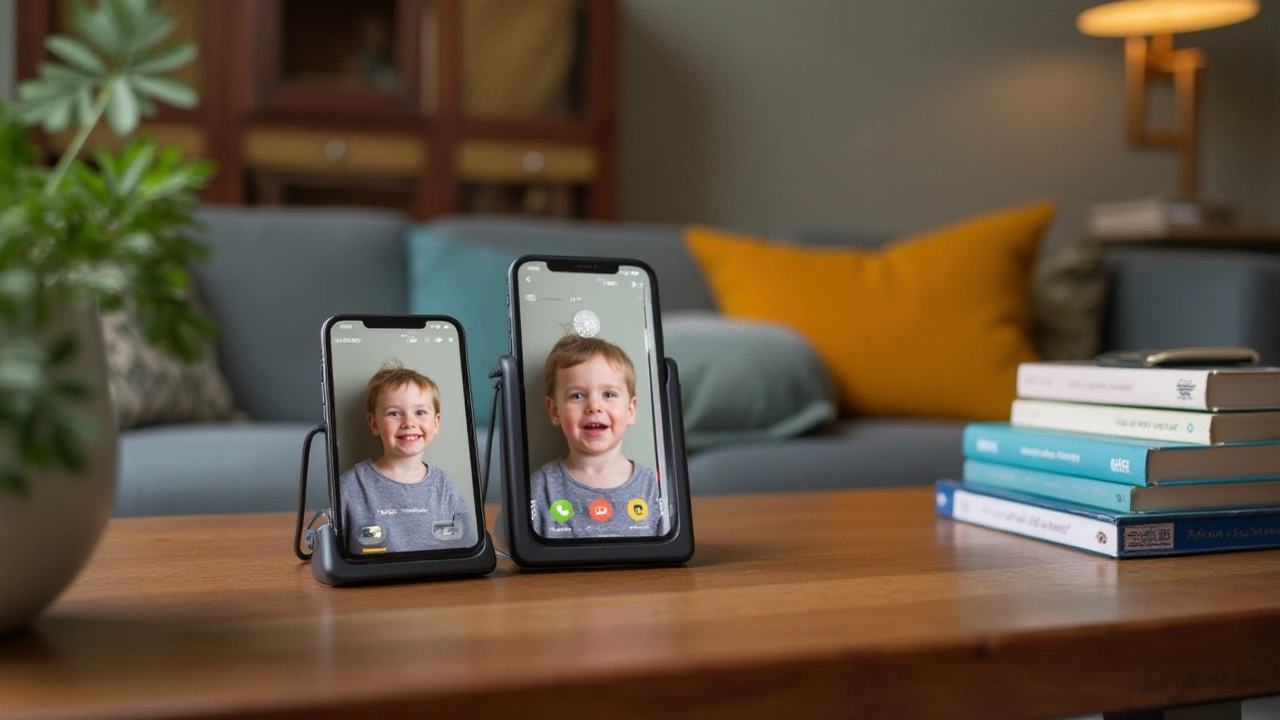
Challenges and Considerations
While the idea of using two smartphones as a baby monitor can sound appealing due to its cost-effectiveness and smart use of existing technology, there are several challenges and considerations that parents need to bear in mind. One significant challenge is the reliability of your internet connection. Since this setup typically requires Wi-Fi, any connectivity issues could result in gaps in monitoring, leaving parents anxious. Moreover, ensuring strong Wi-Fi coverage in every corner of the house can sometimes be tricky, particularly if you live in a larger space or in an area with poor service.
Another consideration involves the security of the devices and apps being used. Whenever personal devices are involved, the possibility of breaches cannot be ignored. It's vital that parents use trusted apps with strong security protocols to protect their privacy and their child’s safety. Some applications may require subscriptions for premium versions that offer enhanced features, yet this could potentially offset the budget-friendly nature of using smartphones. Therefore, researching apps and reading reviews comes highly recommended.
Battery consumption is a practical aspect that cannot be overlooked. Smartphones constantly running as a baby monitor tend to consume high amounts of battery, which in itself can be a problem during long durations of use. Consider this particularly when there isn't a power outlet readily available for prolonged charging. Also, older devices may slow down, adding to functionality issues during crucial times.
Sound and Video Quality
Quality of sound and video is another aspect to account for. While advanced smartphones have high-definition capabilities, not all older devices will deliver clear visuals or sound. Thus, the monitoring experience may not always meet expectations set by traditional baby monitors, especially in low-light conditions. Evaluating the quality beforehand is wise, perhaps by doing test runs to ascertain how it performs under different lighting and noise scenarios.Last but not least, switching over to a smartphone-based monitoring system means sacrificing some specialized features of traditional baby monitors. Many standard baby monitors come with temperature sensors, lullabies, or two-way communication out-of-the-box. These are often lacking in basic smartphone setups unless you invest in additional accessories or apps.
“Using smartphones as baby monitors requires careful consideration of usability and reliability. It’s about finding the balance between savings and ensuring safety.” — Parenting Tech Magazine
Tips for Ensuring Reliability and Safety
Transforming two smartphones into baby monitors is undoubtedly a clever use of technology, but ensuring their reliability and safety is paramount. After all, you're dealing with your child’s safety. One of the foremost steps is to make sure that both smartphones are connected to a stable Wi-Fi network. This will prevent any glitches or breaks in connection which could leave you momentarily blind to your baby’s needs. If possible, opt for a Wi-Fi setup that has dual bandwidth as it reduces congestion and ensures smoother, undisrupted video transmissions. It's wise to test the network strength in the room where your baby sleeps to gauge any potential signal interferences that might go unnoticed.
Battery life is another critical factor. Active monitoring drains battery life significantly, so it’s ideal to keep both devices plugged in or use power banks for backup. It's frustrating when you rely on technology and it fails due to something as avoidable as a dead battery. Besides, always set alerts for low battery levels so you can react before it's too late. Regularly update the operating systems and the apps you’re using. Keeping your software up-to-date means you’re benefiting from the latest bug fixes and improvements, making your monitoring more efficient.
Security is one area you mustn’t ignore. With stories about hacking and unauthorized access floating around, ensure the apps you use have robust security measures. Choose applications known for their encryption capabilities to maintain privacy. Set strong passwords for the accounts you use on these platforms, and if possible, enable two-factor authentication. This extra layer of security helps protect your devices from unauthorized access. According to a survey conducted by Tech Parent, 46% of parents using technological monitoring devices worry most about data and privacy breaches. But taking proactive security measures can significantly minimize these risks.
“In the realm of digital parenting, ensuring the reliability and safety of any tech solution you deploy is non-negotiable. It's not just about convenience, but peace of mind.” – Tech Parent Magazine
Think about the physical positioning of your smartphones. You’d want an angle that covers as much of your baby’s sleeping area as possible without compromising signal strength. Clamps or stands can help fix the phones in stable positions. Some parents prefer to repurpose unused items like bookends or boxes as phone stands. Also, make sure the phones are placed safely away from the baby’s reach to prevent any accidents. Kid-proofing the setup might include securing the power cords, so they're out of your child's curious little fingers.
Finally, frequent testing is a wise habit. Routine checks ensure that both audio and video feeds function as expected. Engage another person to help you with these tests while you're situated at different points within your home. Recognizing stability issues early means you can solve them without the last-minute scramble, ensuring your smartphone baby monitor setup works when you really need it to. Remember, your assurance in its reliability and safety will make this creative technology hack truly valuable.


